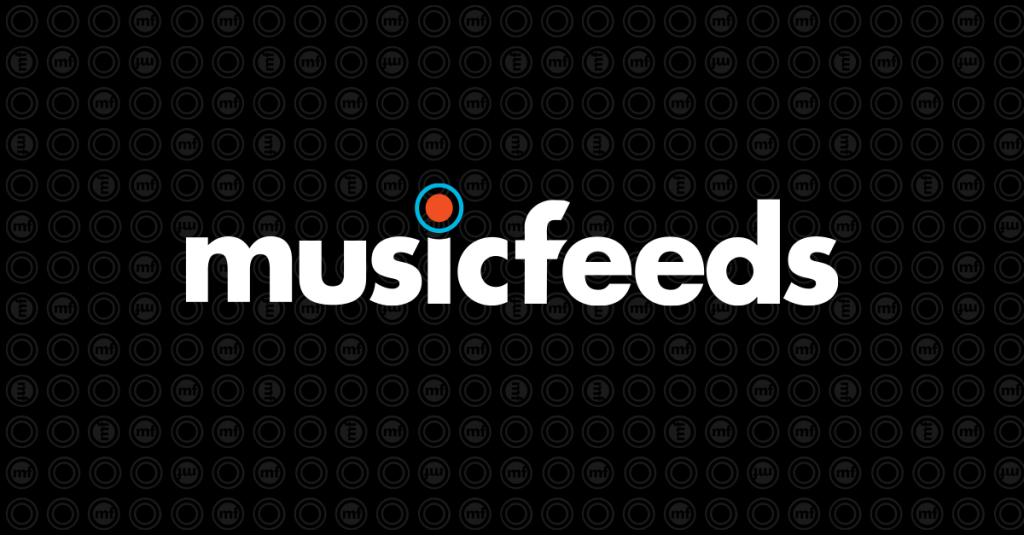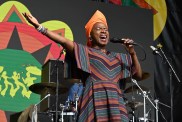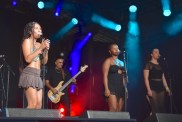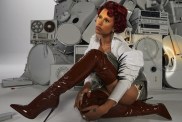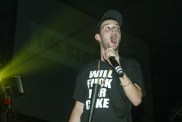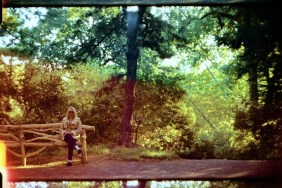With one of the most iconic bands to ever tour the earth touching down in Brisbane sometime today, it seemed an appropriate time to take a retrospective look at their studio album discography, to address what each album meant for the band, and to build up the excitement for their concert. With the Chugg Entertainment promise of a performance that “will showcase the band’s multi-decade career in an aural and visual celebration”, many fans got a little bit excited, hoping for a rare display of tracks from their earlier works. So in order to cover every possible outcome of their concerts, we’re going to take a look at all eight studio albums that the band have produced over the past 27 years.
Pablo Honey – 1993
Although Pablo Honey received the wooden spoon in NME’s 2011 poll ‘What’s The Best Radiohead Album?’ it is the reason that they broke into the global alternative music scene. Prior to its release, the band released seminal track Creep as their debut single; however, initially it did not receive much recognition. It charted 78th on the UK charts and only just cleared 6,000 units. However, it was after the release of Pablo Honey the following year that Israeli radio host Yoav Kutner played Creep, resulting in nationwide success, which saw both Creep and Pablo Honey recognised for their true genius. As Israel fell to the power of Radiohead, a domino effect took place, with Spain, America and New Zealand next to fall under the spell of the lead single. However, to truly appreciate Pablo Honey, one needs to go beyond Creep and listen to the powerful chord progressions of the upbeat track How Do You? or the distorted guitar riffs of Ripcord, which, accompanied by Thom Yorke’s ascending vocal melodies, create a sense of true genius.
http://www.youtube.com/watch?v=GYz_F2zNAVE&feature=fvwrel
The Bends – 1995
It was the acquisition of famed producer John Leckie (The Stone Roses, Muse, New Order) that really brought their sophomore album into its own. Rather than storming into the studio as quickly as possible, Radiohead calmly approached their recording, with Thom Yorke telling writer Mac Randall that “We had all of these songs and we really liked them, but we knew them almost too well… so we had to sort of learn to like them again before we could record them, which is odd.” This painful process of continuous practicing may be the reason why the band rarely play any songs from The Bends; however, it is also the reason for the album’s triple platinum success.
The album’s title track opens with that famous guitar chord, demanding attention from the onset. Much of The Bends‘ success can only be understood with a comprehensive understanding of the United Kingdom’s social life during the time of its release, or lack of social activities. For many, the early 90s was a dreary time – the excitement and mystery of the Cold War had died off, and the world seemed to have limited issues. The lyrical genius of Thom Yorke allowed all listeners to relate to this, simply stating “I wish it was the sixties, I wish we could be happy. I wish, I wish, I wish that something would happen.”
Yet the diversity of the album was a key reason as to its 10/10 Pitchfork rating. The transition from the aforementioned track, The Bends, into the melodic progression of High & Dry and Fake Plastic Trees created for a strangely broad album, allowing a larger audience to not only appreciate The Bends, but in fact worship it. The album closes with Street Spirit, an iconically simple track which showcases the guitar mastery of Greenwood and Ed O’Brian and the range of Yorke’s vocals. It is this perfect combination, which I have already mentioned several times, that makes this album so special.
Since it’s release, it has been named in The Observers ‘50 Albums That Changed Music‘ feature, in which it stated “Radiohead’s Thom Yorke popularised the angst-laden falsetto, a thoughtful opposite to the chest-beating lad-rock personified by Oasis’s Liam Gallagher. Singing in a higher octave-range and falsetto voice to a backdrop of churning guitars became a much-copied idea, however, one that eventually coalesced into an entire decade of sound. Without this, Coldplay would not exist, nor Keane, nor James Blunt.”
OK Computer – 1997
After their breakthrough of both Pablo Honey and The Bends, Radiohead’s third album would make or break the band, making it their most important to date. However, through the masterful work of famed producer Nigel Godrich (who had previously engineered on The Bends) the band would truly be brought into their own unique sound. Supported by the release of three singles Karma Police, Paranoid Android and No Surprises, OK Computer saw the band solidify their international success, building upon their already large fan base, and would go on to sell more than 4 million copies, reaching a triple platinum rating within the UK and double platinum in the US.
To further difference their sound, the group drew inspiration from DJ Shadow, and began experimenting with programmed drum beats to further emphasise Selway’s drumming. However, it was the second track, Paranoid Android that would emerge as the most creative and successful track off the album. The use of computerised backing vocals (listen hard) drew influence from both Queen’s anthem Bohemian Rhapsody and works of The Pixies. What makes the recording of Paranoid Android even more interesting, however, is that it was recorded within a Middle Ages mansion, located in Bath. Yet for OK Computer to be recognised as the greatest Radiohead album, as noted within the aforementioned NME poll, one must dive beyond its lead track.
The alternative style of Fitter Happier, which consists of a Stephen Hawkin’s-style voice, accompanied with a progressive piano ballad, transitions into their experimental guitar-based track Electioneering, which saw them move in yet another direction, similar to something The Black Keys might release, with more cowbell. Furthermore, Exit Music (For A Film) showcased a more instrumental side of the band as it was written for the closing credits of Baz Luhrmann’s 1996 adaption of Romeo + Juilet. It was this creativity, and diversification, which built upon their previous works, that cemented their place in musical history as one of the most creative bands to emit sound.
http://www.youtube.com/watch?v=zIklhgI-m2s
Kid A
The release of Kid A saw a further diversification of their sound, a key reason for their success – not a lack of consistency, but an adaption to changing styles. This change saw a slight division of fans, who began to question the future of Radiohead. However, to this day Kid A remains one of their great albums. The band replaced their ‘anthemic’ rock-based genre, siding with a more electronic sound. They also moved away from their three-guitar lineup, which allowed for a clear diversification of instruments, resulting in a more matured sound.
The muted, melodic sound of the organs, and edited vocals within opening track Everything In It’s Right Place and the lack of distorted guitars made for a more approachable sound. However, Thom Yorke and the Greenwood brothers were careful not to completely abandon the sound of their roots. Optimistic not only featured several guitar lines but also the presence of a 1928 Ondes Martenot, which would continue to be featured on several other albums in the future. Idioteque saw the band first begin to experiment with the now famous ‘trip’ sound, utilising easily identifiable electronically maniuplated sounds, which would feature consistently throughout.
The creative climax of Kid A, however, came in the form of the three-minute epic Motion Picture Soundtrack. The closing track saw Radiohead return to their true lyrical form, highlighting depressing elements of day-to-day life, and juxtaposing it against the powerful descending rolls of harp-like keyboards. The orchestral marvel includes operas and a string ensemble. Although the music itself only lasts for three minutes, the group appropriately left a four-minute silence, allowing the listener to soak in the beauty of what they had just heard. Kid A topped charts in six different countries, including the US, UK, New Zealand, Canada and France, and achieved a platinum rating in many others.
Well, that’s our Retrospective look at Radiohead’s first fifteen years. Their Australian tour commences today. Kicking things off in Brisbane, they will travel down to Sydney and then on to Melbourne before departing us, possibly never to return. The remaining twelve years of the Radiohead saga will be available for your reading pleasure come Monday morning, just in time for their first Sydney show.
Radiohead Australian Tour 2012
Tuesday, 6th November
Vector Arena, Auckland
Friday, 9th November
Entertainment Centre, Brisbane
Monday, 12th November
Entertainment Centre, Sydney
Tuesday, 13th November
Entertainment Centre, Sydney
Friday, 16th November
Rod Laver Arena, Melbourne
Saturday, 17th November
Rod Laver Arena, Melbourne
